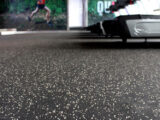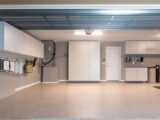
Modern Elegance: How Contemporary Mosque Carpets Are Blending Tradition with Innovation
April 10, 2025Mosque carpets have long played an essential role in Islamic architecture—not just for practical comfort during prayer but also as a powerful visual and spiritual element. Traditionally rich in symbolism and intricate design, these carpets are now undergoing a transformation. In today’s world, mosque carpets are becoming the perfect blend of heritage and innovation, where time-honored motifs meet modern aesthetics, technology, and sustainability.
Let’s explore how contemporary mosque Carpets Dubai are evolving—retaining their sacred beauty while reflecting the changing tastes and needs of modern worshippers.
From Classic Patterns to Modern Geometry
Islamic art has always been deeply rooted in geometry, symmetry, and calligraphy, with mosque carpets historically featuring elaborate arabesques and medallion motifs inspired by Persian and Ottoman styles. While these traditional patterns remain popular, today’s mosque carpet designers are incorporating simplified geometric patterns, clean lines, and muted color palettes to create a more modern, serene atmosphere.
Instead of bold reds and deep blues, you’ll often find earthy tones, soft greys, and natural beiges that blend harmoniously with contemporary mosque interiors. These subtler palettes foster a calm, focused space for prayer while still preserving Islamic visual identity.
The Rise of Customization and Branding
As mosques increasingly reflect the identity of their communities, there is a growing demand for custom-designed carpets. Modern manufacturers offer the flexibility to weave unique motifs, community emblems, or even architectural references into the carpet itself. This level of personalization helps distinguish one mosque from another while reinforcing a sense of belonging and unity.
In high-profile mosques—especially across the UAE and Gulf region—carpets are now often tailored to match the interior design down to the finest detail. This includes aligning carpet lines perfectly with the Qibla direction, integrating niche lighting design, and ensuring seamless acoustics.
Innovation in Materials and Technology
Traditionally, mosque carpets were made using wool or silk, materials known for their softness and luxury. While these are still used in premium installations, modern mosque carpets are increasingly made from advanced synthetic fibers such as polypropylene and nylon. These materials offer several advantages:
- Higher durability in high-traffic areas
- Stain and fade resistance, especially in sunlit mosques
- Easier maintenance and cleaning
- Enhanced fire resistance and safety compliance
Moreover, carpet production itself has become more sophisticated. With the advent of computerized tufting and weaving technologies, manufacturers can now create intricate designs with greater precision and at a much faster pace. Some carpets are even being engineered to reduce echo and enhance sound absorption, improving the acoustics of large prayer halls.
Spiritual Comfort Meets Ergonomic Design
Modern mosque carpets are designed not only to look beautiful but also to offer maximum comfort during long prayer sessions. Today’s designs often incorporate extra underlay padding, higher-density piles, and ergonomic features that support the knees and ankles.
Additionally, carpets are now being laid with invisible markers for prayer rows, ensuring perfect alignment without distracting from the overall design. Some innovative carpet systems also integrate underfloor cooling or heating compatibility, offering comfort throughout the seasons.
Sustainable Choices for a Better Future
As environmental consciousness grows globally, the call for eco-friendly mosque carpets is getting louder. Green mosque initiatives now look for carpets that are:
- Recyclable or made from recycled fibers
- Produced with low-impact dyes and non-toxic adhesives
- Certified for low VOC emissions, improving indoor air quality
- Manufactured by companies that follow ethical and fair labor practices
These sustainable options are especially important for mosques aiming to achieve LEED certification or those participating in environmental campaigns within their communities.
The Influence of Global Design Trends
With the rise of Islamic architecture firms operating internationally, mosque carpet trends are being influenced by global design movements. Scandinavian minimalism, Japanese Zen aesthetics, and modern Middle Eastern styles all contribute to a more diverse, fusion-inspired approach to mosque interiors.
This trend is especially visible in multi-functional Islamic centers in the West, where prayer spaces also serve as community halls, learning centers, and social hubs. The carpets here often reflect the multi-cultural identity of the community—balancing traditional Islamic symbols with inclusive, contemporary design elements.
Conclusion: A New Chapter in Sacred Design
Contemporary Mosque Carpets Dubai are no longer just a surface for prayer—they’re a canvas of cultural storytelling, spiritual symbolism, and thoughtful innovation. From material advancements and ergonomic comfort to eco-conscious choices and minimalist aesthetics, today’s mosque carpets are being reimagined to meet the expectations of a modern, design-aware Muslim community.
And yet, despite all this innovation, the heart of the mosque carpet remains unchanged: it is still a sacred space beneath your feet, guiding worshippers through prayer with beauty, purpose, and reverence.







